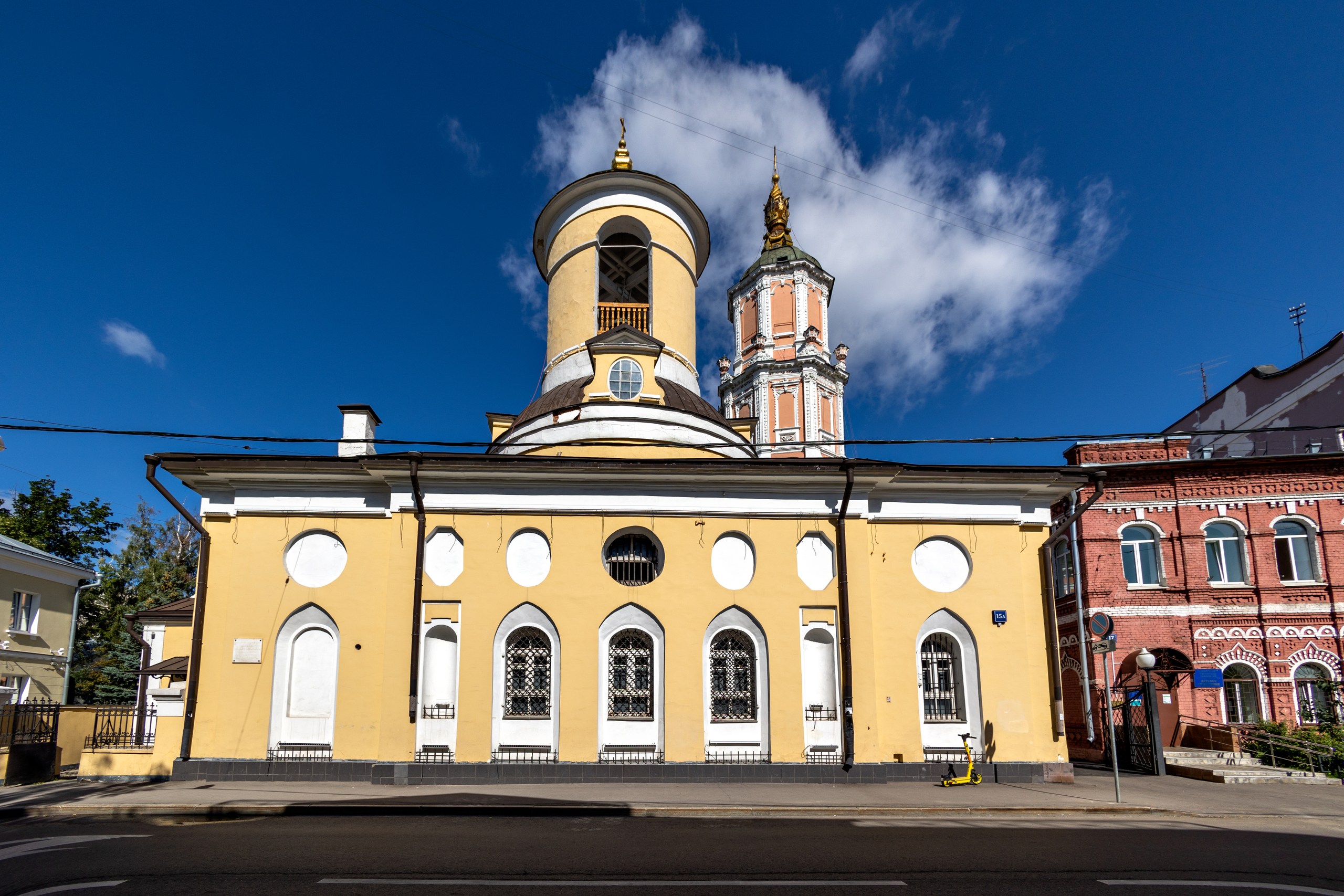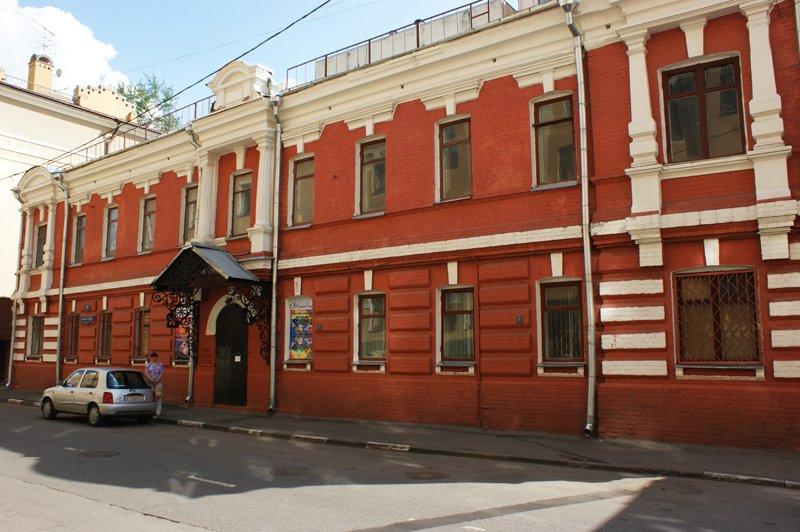Высокая башня этой церкви до сих пор хорошо видна с Чистых прудов. Задуманная как доминанта над всей Мясницкой слободой, она справляется с этой задачей и сегодня. Однако изначально план создателя храма был более масштабным и нашел реализацию в другом городе и стал всемирно известным зданием…
Церковь Архангела Гавриила известна с 1551 года как деревянный приходской храм для мясников, населявших местную слободу. Второе название – «на Поганом пруду» – также связано с родом занятий прихожан, устраивавших по соседству слив нечистот.
В 1657 году церковь упоминается уже как каменная, вторая перестройка произошла в 1679 году. В конце XVII века значительную территорию рядом с храмом выкупил сподвижник Петра I – А.Д. Меншиков (его усадьба располагалась на месте современного здания Почтамта). Он и стал ктитором новой церкви: сначала в 1701 году он пристроил к ней придел Введения, ставший его домовым храмом, а с 1705 года начал строительство нового здания, завершенное в 1707 году (его основная часть сохраняется и сегодня).
Архитектор Иван Зарудный, создававший новую церковь, работал в стилистике петровского барокко, которое заимствовало всё больше черт из европейской храмовой архитектуры. К его творениям относится ряд московских церквей, объединенных главной чертой – они вытянуты по вертикали. Храм уже не располагается в длину, не состоит из колокольни, трапезной и четверика с алтарными апсидами – он растет ввысь и становится центричным. Оттого многие постройки Зарудного напоминают башни – этот же титул перешел и к церкви Архангела Гавриила, получившей в народе прозвище «Меншикова башня». Полсотни колоколов подчинялись часовому механизму, доставленному из Англии. Фасады были покрыты белокаменным скульптурным декором, по углам располагались статуи. Но главной особенностью храма был венчавший его огромный 30‑метровый шпиль, увенчанный фигурой ангела с крестом. Пройдет время, и этот мотив будет повторен при строительстве Петропавловского собора в Санкт-Петербурге.
Отделка храма не была завершена: с переносом столицы в Санкт-Петербург Меншиков к своей московской усадьбе охладел. 14 июня 1723 года произошла трагедия: в шпиль ударила молния, от которой храм загорелся; колокола, проломив своды, разбились, а сама башня надолго оказалась брошенной и никак не использовалась (службы проходили только в боковых приделах). Только через полвека, в 1770‑х годах, его привели в порядок и возобновили богослужения. Но высокий шпиль не был восстановлен, его место заняла вытянутая главка с винтообразным декором. Также и арки в ярусах башни оказались заложены и в качестве звонниц более не использовались.
По одной из версий, восстановлением храма занимался известный масон Г.З. Измайлов, башня же использовалась для тайных масонских собраний, проходивших в её верхнем ярусе, а на её фасадах появились соответствующие символы и изречения, уничтоженные в 1863 году по указу митрополита Московского Филарета.
Вдоль Архангельского переулка в 1806 году на средства директора Почтамта Ф.П. Ключарёва по проекту архитектора И.В. Еготова был построен небольшой храм во имя святого Феодора Тирона (позднее переосвящена в честь Феодора Стратилата). В отличие от Меншиковой башни, здесь было отопление, церковь использовалась для богослужений в зимний период, а также исполняла роль колокольни, надстроенной прямо над зданием. В интерьере сохранился иконостас и росписи второй половины XIX века.
В 1930‑х годах оба храма были закрыты, но их внутреннее убранство практически не пострадало. Лишь у Федоровской церкви был разобран четырехколонный портик, выступавший за красную линию переулка. В 1948 году оба храма были снова открыты для богослужений и переданы Антиохийской православной церкви в качестве подворья. Оно продолжает функционировать здесь и сегодня под руководством епископа Нифона, возглавляющего подворье с 1977 года.
Помимо убранства Гаврииловского храма, его лепнины и росписей, особое внимание привлекает к себе иконостас. Он создавался для другой московской церкви – Спаса Преображения на Преображенской площади. Когда в 1964 году последняя была уничтожена, её иконостас удалось сохранить и перенести в Гаврииловский храм. Старый же иконостас перевезли в Успенский кафедральный собор Махачкалы.






















%20BEL_0521.jpg&w=1920&q=75)






